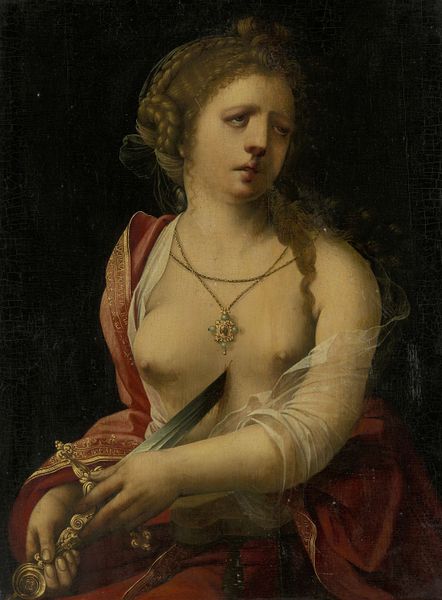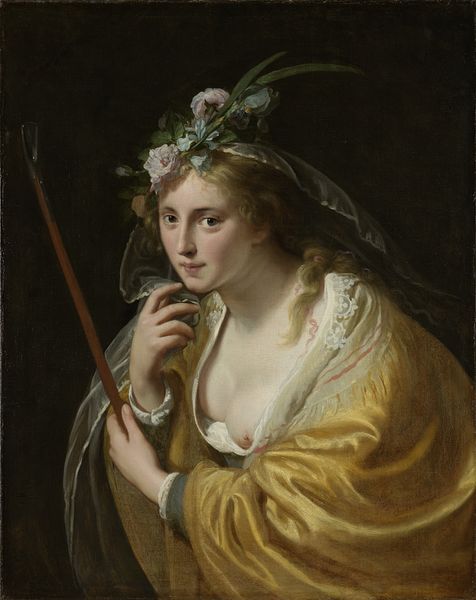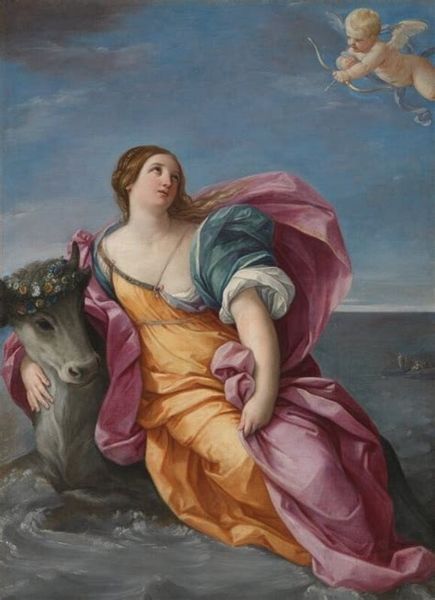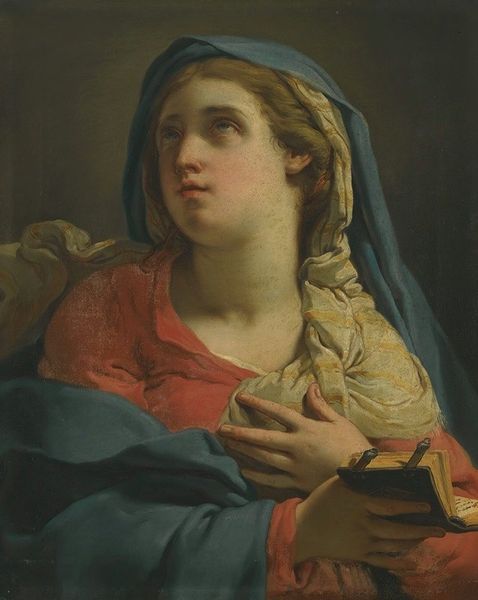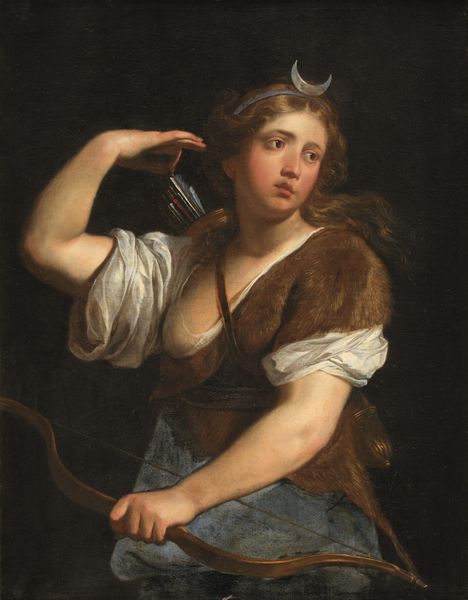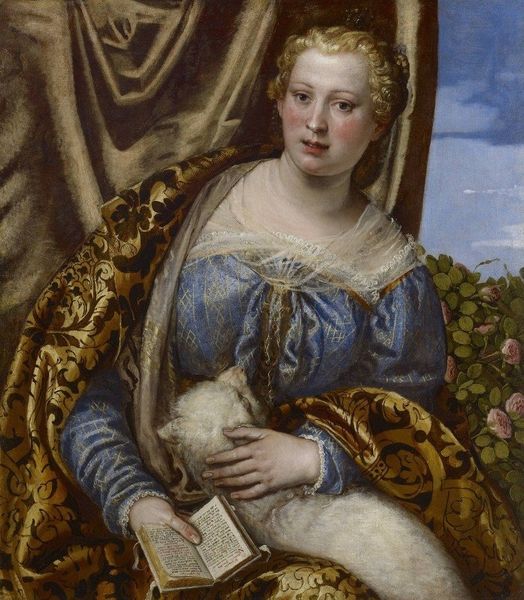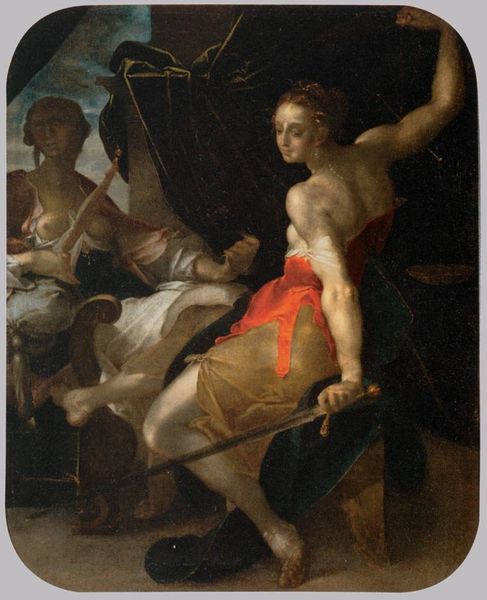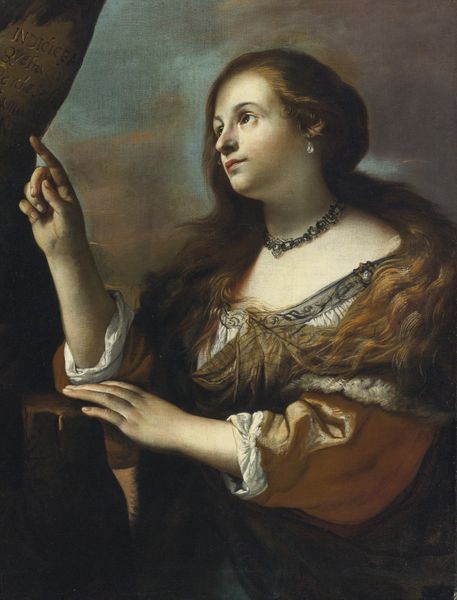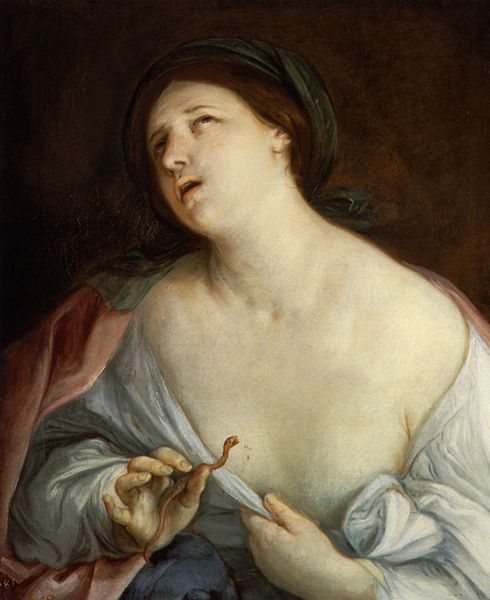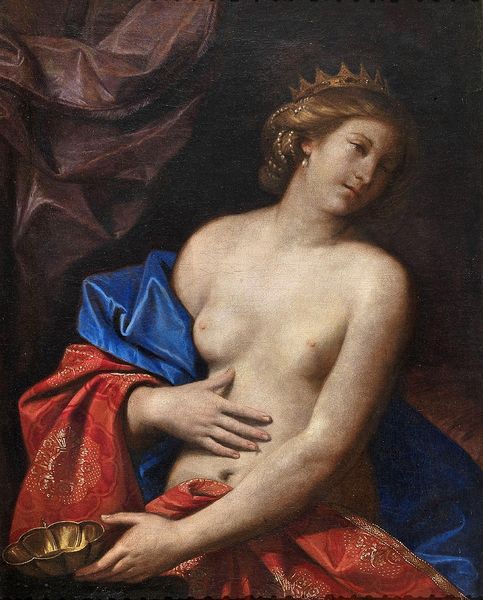
painting, oil-paint
#
portrait
#
allegory
#
painting
#
oil-paint
#
mannerism
#
nude
Copyright: Public domain
Curator: Here we have Bartholomeus Spranger’s oil painting, “Diana – Luna,” from 1611. It's quite striking, wouldn't you say? Editor: It has this unsettling quality. Her upward gaze combined with the vulnerability in her pose… and the softness of that light-green garment. Curator: Spranger was a master of Mannerism, and this work exemplifies that. Observe how Diana's form is elongated, almost serpentine. Note also the attention to the subtle transitions in the application of colour. Editor: I am drawn to how Spranger used the oil paint itself, its sheen reflecting in her eyes. Also, the rendering of the fur seems crucial to communicating Luna’s closeness to nature; this reflects contemporary craft knowledge relating to natural dying and textile treatment. Curator: The crescent moon adorning her head identifies her, of course, as Diana, the Roman goddess of the hunt and the moon – often conflated with the Greek goddess Artemis. What strikes me is how that symbol connects with her interiority; the implied symbolism. Editor: Exactly. This portrayal moves beyond simple depiction into the allegorical. In terms of the historical material process, what did the contemporary production context permit here? What dyes or knowledge relating to applying specific material does this invoke? Curator: Undoubtedly, there would have been certain traditional recipes, or knowledge passed from master to apprentice. The Mannerists often drew upon complex allegorical frameworks. The hunt, virginity, and the lunar cycle… it’s a tapestry of meaning! Editor: True. When examining art through the lens of material reality and processes, rather than solely idealizations, our comprehension deepens by including both what is and how things came to be. Curator: I appreciate you mentioning the techniques, now considering how Spranger employed his sophisticated understanding of compositional arrangements—and of the possibilities within this conceptual architecture —truly demonstrates the enduring influence of the Mannerists. Editor: Agreed. Considering the means of creation and dissemination brings art closer to our world, rather than an untouchable relic. Curator: So, although my appreciation emanates from different qualities and characteristics within “Diana – Luna,” these have proven compatible, mutually inclusive when discussing Spranger's artwork. Editor: Certainly, looking more deeply into art makes it all the more compelling.
Comments
No comments
Be the first to comment and join the conversation on the ultimate creative platform.
